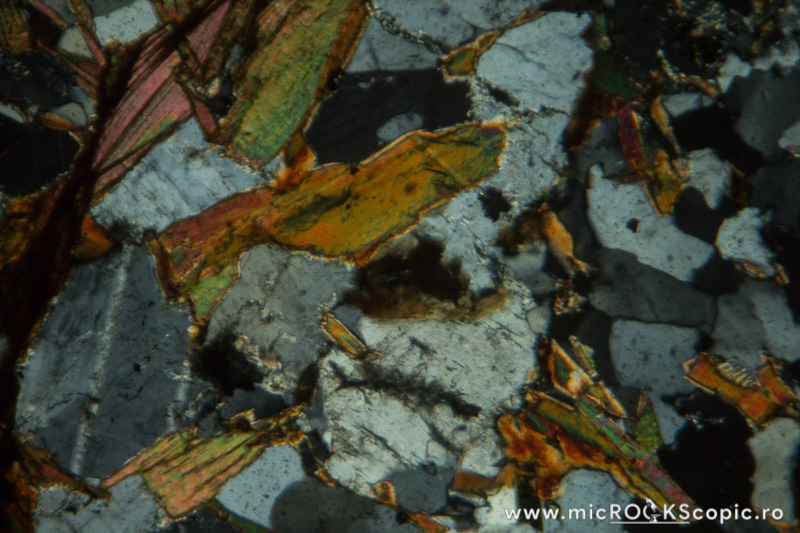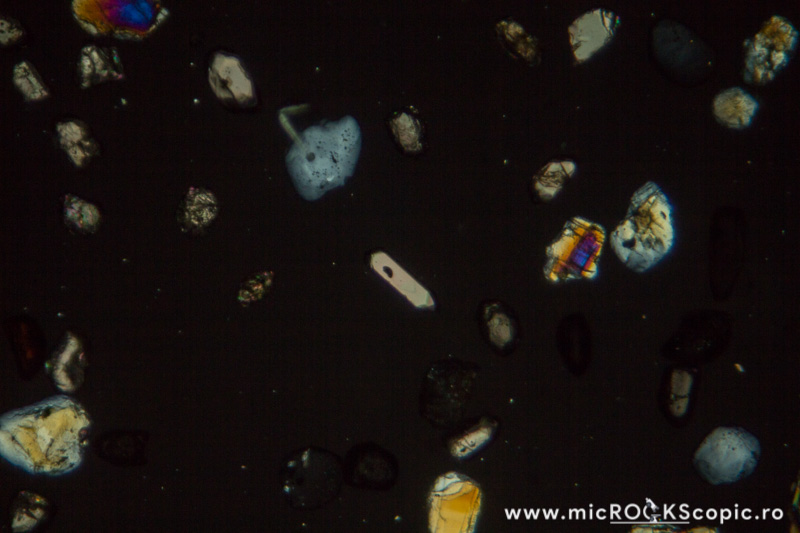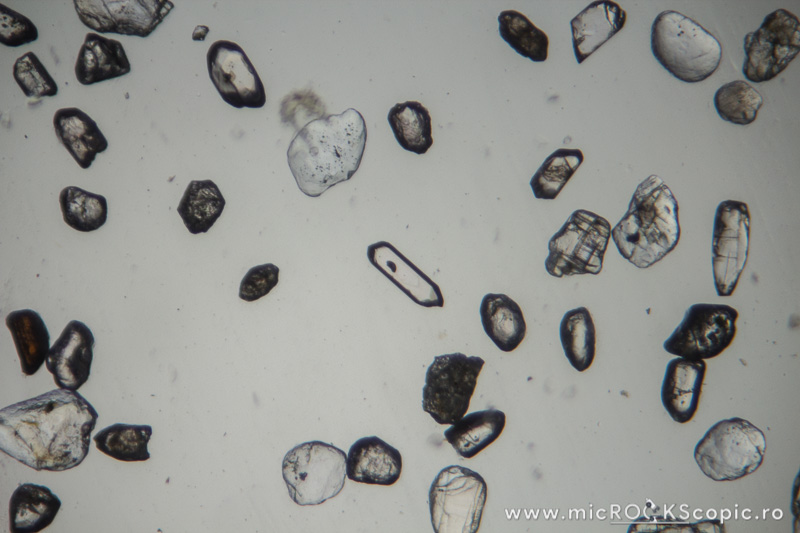About Zircon
From Arabic zarqun, which was derived from Persian zar (= gold), and gun (= color).
Zircon hand-specimen
Formula: ZrSiO4 – may contain minor U, Th, Pb, Hf, Y/REE, P and others elements
System: Tetragonal
Color: Colourless, yellow, etc.
Lustre: Adamantine, Vitreous, Greasy
Hardness: 7½
Density: 4.6–4.7
System: Tetragonal
Color: Colourless, yellow, etc.
Lustre: Adamantine, Vitreous, Greasy
Hardness: 7½
Density: 4.6–4.7
Zircon PPL properties
Relief: Very High positive
Habit/Form: Zircon commonly occurs a euhedral to subhedral tetragonal crystals with pyramidal terminations. It is not uncommon for euhedral overgrowths to be developed on rounded or subhedral cores. As detrital particles, zircon ranges from euhedral to rounded, depending on the amount of transport. Complex forms are known by relatively rare.
Color: Colorless (usually), to pale brown, pale yellow, or gray.
Pleochroism: Absent to weak
Cleavage: Absent
Habit/Form: Zircon commonly occurs a euhedral to subhedral tetragonal crystals with pyramidal terminations. It is not uncommon for euhedral overgrowths to be developed on rounded or subhedral cores. As detrital particles, zircon ranges from euhedral to rounded, depending on the amount of transport. Complex forms are known by relatively rare.
Color: Colorless (usually), to pale brown, pale yellow, or gray.
Pleochroism: Absent to weak
Cleavage: Absent
Zircon XPL properties
Isotropy/Anisotropy: Anisotropic
Interference color: Order III-IV; bright; detrital grains commonly show high-grade white
Extinction angle: Parallel / 0° / straight to crystal outlines
Twins: Absent
Uniaxial/Biaxial: Uniaxial (+) (anomalous Isotropic)
Optic axial angle (2V): –
Interference color: Order III-IV; bright; detrital grains commonly show high-grade white
Extinction angle: Parallel / 0° / straight to crystal outlines
Twins: Absent
Uniaxial/Biaxial: Uniaxial (+) (anomalous Isotropic)
Optic axial angle (2V): –
Zircon distinguishing features under the microscope
Get Geology Toolkit Premium for more features of Zircon thin section under the microscope.
References
- Deer, W. A., Howie, R. A., & Zussman, J. (2013). An introduction to the rock-forming minerals (pp. 498). Mineralogical Society of Great Britain and Ireland, London.
- mindat.org – The Mineral Database











![[thumb]](http://microckscopic.ro/wp-content/uploads/zircon_2_06-1-150x150.jpg)
![[thumb]](http://microckscopic.ro/wp-content/uploads/zircon_1_06-1-150x150.jpg)
![[thumb]](http://microckscopic.ro/wp-content/uploads/zircon_3_07-1-150x150.jpg)
![[thumb]](http://microckscopic.ro/wp-content/uploads/zircon_4_06-1-150x150.jpg)
![[thumb]](http://microckscopic.ro/wp-content/uploads/zircon_5_08-1-150x150.jpg)






